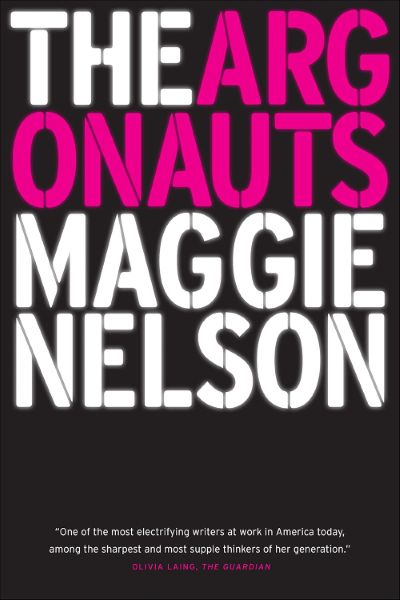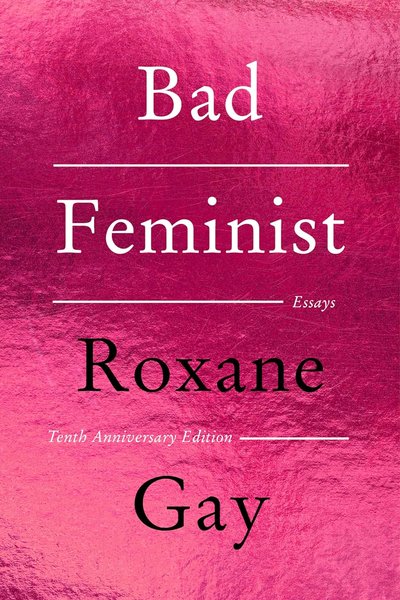Know My Name
In 2015, when Stanford University student Brock Turner sexually assaulted a woman known as 'Emily Doe,' this case became a symbol of unity for women across America. Because of the worst thing that happened to her, Emily Doe became one of the most famous women in the world—yet no one knew her real name. This all changed in 2019 when Chanel Miller revealed herself as 'Emily Doe' and published this memoir, telling her story as an act of reclaiming narrative identity.

📝 Book Review
Chanel Miller’s memoir “Know My Name” (2019) stands as one of the most important feminist witness literature works of the 21st century. This work not only chronicles a sexual violence survivor’s difficult journey from trauma to recovery but more importantly provides profound critique and reflection on the American judicial system, media culture, and campus sexual assault issues. Through reclaiming her name and narrative rights, Miller transforms personal experience into a force for social change, becoming an important voice in the #MeToo movement and anti-sexual violence struggle.
From “Emily Doe” to Chanel Miller
The core of “Know My Name” lies in the reclamation of identity. On January 18, 2015, Chanel Miller was sexually assaulted by Brock Turner at a Stanford University party. During subsequent legal proceedings, she was called “Emily Doe” to protect her privacy. While this pseudonym protected her identity, it also caused her to lose her voice and agency to some degree.
Miller describes in detail the painful experience of this identity split. On one hand, “Emily Doe” became a symbolic victim who drew national attention, her experience sparking countless people’s anger and sympathy; on the other hand, the real Chanel Miller was forced to hide behind this pseudonym, unable to publicly discuss her experience, unable to receive public support, and unable to fully control her own narrative.
When Miller decided to reveal her true identity and publish this memoir in 2019, she was not only reclaiming her name but challenging entire social stereotypes about sexual violence victims. Through the title “Know My Name,” she declared that she is not merely a victim but a complete, complex person with her own dreams, talents, and agency.
This transformation from anonymous to named carries profound political significance. It challenges cultural expectations that traditionally require sexual violence victims to remain silent and invisible, asserting that victims have the right to tell their own stories and the right to be seen and heard. Miller’s brave action set an example for other survivors, proving that transformation from victim to survivor to advocate is possible.
Innovation in Trauma Narrative
“Know My Name” occupies a unique position in the tradition of trauma literature. Miller, with a poet’s sensitivity and visual artist’s observational power, creates a new way of trauma narrative. She doesn’t avoid the pain of trauma but doesn’t let pain consume her narrative either. Instead, she finds a balance that honestly records trauma’s impact while insisting on her complexity as a complete human being.
The book’s description of the sexual assault event itself is careful and powerful. Miller doesn’t provide overly detailed descriptions to satisfy readers’ curiosity but focuses on the event’s psychological and physical impact on her. She uses poetic language to describe the loss and recovery of consciousness, post-trauma confusion and fear, and the gradual process of understanding what happened. This treatment both protects the author and provides readers with a window to understand trauma’s impact.
Miller’s description of post-traumatic stress symptoms has both psychological accuracy and literary beauty. She describes nightmares, anxiety, dissociative symptoms, and social difficulties, but also records small progress and moments of recovery. This non-linear recovery narrative reflects the true process of trauma recovery, avoiding simple inspirational narratives.
More importantly, Miller places personal trauma within larger social and political contexts. Her trauma comes not only from the sexual assault event itself but also from the judicial system’s re-traumatization, media misreporting, public questioning and misunderstanding. This expanded concept of trauma reveals the social nature of sexual violence and how society’s responses can either exacerbate or alleviate individual trauma.
Feminist Critique of the Judicial System
“Know My Name” provides profound and detailed feminist critique of the American judicial system. Miller records the entire process from reporting to trial to sentencing, revealing how the judicial system fails sexual violence victims on multiple levels.
First, Miller describes in detail the legal process’s secondary trauma to victims. Defense lawyers’ questioning strategies—questioning her memory, behavior, and moral character—embody entrenched rape myths in the judicial system. These strategies are not merely legal techniques but reflect patriarchal assumptions about women’s sexual behavior and victim identity within society.
Miller’s record of the trial process is particularly powerful. She describes being forced to repeatedly describe traumatic experiences in court, facing defense lawyers’ malicious questioning, and watching her private life being publicly dissected. These descriptions reveal how the judicial system places victims in secondary victimization situations, making the process of seeking justice itself a form of punishment.
Turner’s ultimate sentence of only six months imprisonment (actually serving only three months) became the focus of Miller’s critique. This sentence not only reflects the judicial system’s contempt for sex crimes but also embodies how class, race, and gender privilege operate in judicial processes. Turner’s identity as a white, middle-class, prestigious university student and athlete clearly influenced his treatment.
Miller also critiques how the judicial system’s concern for defendants’ futures exceeded concern for victims’ current suffering. The judge’s expressed worry about Turner’s “future” during sentencing contrasts sharply with relative dismissal of Miller’s suffering. This attitude reflects how society places male potential above women’s lived experiences.
Media Representation and Public Narrative
“Know My Name’s” analysis of media coverage and public narrative reveals how news media shapes public understanding of sexual violence. Miller records how media reported her case and how these reports influenced public opinion and her personal experience.
Miller critiques media’s “both sides” reporting of cases, which suggests truth exists somewhere between two extremes while ignoring factual clarity. She points out that when DNA evidence and eyewitness testimony both support prosecution, media still presents cases as ambiguous “he said, she said” situations, actually providing cover for perpetrators.
The book’s analysis of media language is also profound. Miller notices how media uses passive voice and euphemisms to describe sexual violence, how they use “sexual activity” instead of “sexual assault,” how they emphasize defendants’ athletic achievements rather than criminal behavior. These language choices aren’t neutral but reflect media value judgments and social biases.
Miller also records new challenges of the social media era. While social media provides platforms for supporters to express themselves, it also becomes a channel for hatred and questioning. She describes facing online attacks and questioning, and how these attacks exacerbated her trauma.
However, Miller also recognizes positive forces of media and public narrative. Her victim impact statement circulated widely online, inspiring resonance and support from readers worldwide. This direct narrative from the victim’s perspective bypassed traditional media filtering, creating new possibilities for public dialogue.
Identity Politics of Asian American Women
As an Asian American woman, Miller’s racial identity adds additional complexity to her experience. “Know My Name” explores how Asian American women face particular challenges and stereotypes regarding sexual violence issues.
Miller describes silence culture around sexual violence in Asian American communities. Traditional concepts of face and family honor make discussing sexual violence taboo. She records different reactions from family members and how to find balance between respecting cultural traditions and asserting individual rights.
The book also touches on how “model minority” stereotypes affect Asian women. These stereotypes can provide certain protection (such as relatively sympathetic media coverage of her) but can also become burdens (such as expectations of her “perfect victim” image). Miller refuses to be simplified into any single identity, insisting on her rights as a complex individual.
More importantly, Miller connects her experience with broader Asian American women’s experiences. She recognizes that Asian American women are often overlooked in anti-sexual violence movements, and their voices need to be heard and valued more. By revealing her identity publicly, she set an example for other Asian American women.
Art Creation and Recovery
A unique aspect of “Know My Name” is how Miller’s identity as a visual artist influences her recovery process and narrative style. The book intersperses illustrations she created, and these artworks become important tools for processing trauma and reclaiming agency.
Miller describes how art creation helps her process emotions and experiences that cannot be expressed in words. When language becomes insufficient or painful, visual art provides another form of expression. Her illustration works not only decorate the text but are organic components of the narrative, providing readers another window into understanding her inner world.
The book’s exploration of creative activities’ therapeutic value provides important insights for trauma recovery. Miller demonstrates how art helps her reestablish connections with the world, how creation helps regain control and self-worth. This recovery model doesn’t rely on forgetting or “moving past” trauma but achieves growth through creatively integrating experiences.
Miller’s artistic background also influences her writing style. Her prose has visual and sensory qualities, often using concrete images and metaphors to convey abstract emotions and concepts. This style makes complex psychological states understandable and perceptible.
Family Support and Social Networks
“Know My Name” pays profound attention to the importance of family and social support networks. Miller describes in detail how her family—particularly her sister and parents—provided support during her most difficult period.
Miller’s sister Tiffany occupies a special position in the book. As one of the first to know the truth, Tiffany not only provided emotional support but became a bridge between Miller and the outside world. Their sisterly relationship demonstrates how mutual support among women can be a key factor in recovery.
Miller’s description of her parents’ reactions is also detailed. She records their shock, anger, confusion, and gradual understanding process. As an immigrant family, they needed to provide support for their daughter in unfamiliar legal and cultural environments. This description reveals how families collectively face trauma and how cultural differences affect understanding and responding to sexual violence.
The book also emphasizes the importance of professional support. Miller records interactions with therapists, victim rights advocates, and other professionals, showing how professional support complements family support to provide necessary tools and resources for recovery.
More broadly, Miller describes how support from strangers gave her strength. The countless supportive letters and messages she received proved that her experience touched many readers and demonstrated the social value of publicly sharing personal experiences.
Significance of the MeToo Movement
“Know My Name” has close relationships with the #MeToo movement. Although Miller’s case occurred before the #MeToo movement exploded, her voice and experience became important components of this movement.
Miller’s victim impact statement, released in 2016, already had enormous impact, widely recognized as a powerful document exposing sexual violence realities and judicial system problems. When the #MeToo movement emerged in 2017, her experience provided concrete cases and emotional resonance for the movement.
The publication of “Know My Name” further solidified Miller’s important position in the #MeToo movement. This work not only records personal experience but provides in-depth analysis and systematic critique of sexual violence issues. It demonstrates that the #MeToo movement represents not only individual courage but questioning of entire social structures and demands for reform.
Miller’s narrative approach also provides important insights for the #MeToo movement. Her insistence on describing herself as a complete person rather than merely a victim, her analysis of systematic issues rather than just personal accusations, her focus on constructive change rather than just expressions of anger—all provide more mature and effective strategies for the movement.
Legal Reform and Social Change
“Know My Name” has had important impacts on actual legal and social reform. Miller’s case and her public voice promoted multiple concrete reform measures.
At the legal level, Miller’s case led to amendments in California’s rape laws. In 2016, California passed laws requiring mandatory imprisonment sentences for sexual assault of unconscious victims. This law directly responded to the overly lenient sentencing problem in Turner’s case, called the “Emily Doe Law” by media.
At the university campus level, Miller’s experience promoted reform of campus sexual assault policies. Many universities reexamined their sexual assault prevention and response procedures, strengthening support services for survivors. Stanford University itself made multiple modifications to its policies.
At the judicial system level, Miller’s critique promoted reconsideration of judge training and sentencing guidelines. Her case became an important example cited by judicial reform advocates, promoting attention to consistency in sex crime sentencing.
At the social-cultural level, “Know My Name” had important impacts on changing public attitudes toward sexual violence. It educated readers about consent, trauma impacts, and survivor experiences, helping to break down rape myths and victim-blaming culture.
Literary Achievement and Critical Response
From a literary perspective, “Know My Name” received widespread critical acclaim. Critics praised Miller’s writing skills, emotional authenticity, and social insights. This work is considered an important contribution to memoir literature and a representative work of 21st-century feminist literature.
Miller’s writing style fuses elements of poetry, prose, and visual art, creating a unique narrative voice. She can transform personal experience into social criticism with universal significance, transforming painful experiences into beautiful and powerful literary work.
The book’s attention to detail and delicate description of emotions are considered among its greatest achievements by critics. Miller can transform complex psychological states and social dynamics into concrete, perceptible words, enabling readers to deeply understand sexual violence’s impact and recovery processes.
“Know My Name” also received multiple literary awards and honors, including placement on multiple annual best book lists. Its success proves the important position of witness literature and trauma narrative in contemporary literature.
Global Impact and Cross-Cultural Dialogue
Although “Know My Name” originates from specific American experience, its impact is global. This work has been translated into multiple languages, sparking discussions about sexual violence, judicial justice, and women’s rights worldwide.
In different cultural contexts, readers’ resonance with Miller’s experience reveals the universality of sexual violence issues while highlighting common challenges different societies face in addressing these problems. From Asia’s #MeToo movement to Latin America’s feminist protests, Miller’s voice provides important reference and inspiration for global anti-sexual violence movements.
“Know My Name” also promotes dialogue about cultural differences and commonalities. Readers from different cultural backgrounds discussing this work both share similar experiences and feelings while revealing culturally specific challenges and resources. This cross-cultural dialogue provides important mutual learning opportunities for global feminist movements.
Contemporary Significance and Continuing Influence
The contemporary significance of “Know My Name” lies not only in recording an important legal case but in providing profound contributions to contemporary conversations about consent, trauma, justice, and healing. In the current context of the ongoing global #MeToo movement, this work continues to provide important insights and inspiration for activists, policymakers, and the general public.
Miller’s detailed description of the transformation process from victim identity to advocate identity provides pathways and hope for other survivors. She demonstrates how to refuse being defined by trauma while acknowledging trauma’s reality, how to promote social change while seeking personal healing.
This work’s contribution to education is also important. It provides important case studies for sex education, legal education, and social work education, helping professionals better understand sexual violence’s impact and survivors’ needs.
Conclusion: Voice, Agency, and Transformation
“Know My Name” is ultimately a work about voice and agency. Through reclaiming her name and narrative, Chanel Miller not only healed herself but provided countless others with courage to find and use their own voices. This combination of personal courage and social transformation makes this work an important milestone in 21st-century feminist literature and social movement history.
The book’s power lies not just in its documentation of injustice but in its demonstration of how individuals can transform personal pain into collective action for change. Miller’s journey from silent victim to powerful advocate illustrates the possibility of reclaiming narrative control and using personal experience as a force for broader social transformation.
Her decision to reveal her identity and publish this memoir represents a fundamental challenge to systems that seek to silence victims and maintain status quo power structures. By insisting on being known by her name rather than defined by what happened to her, Miller asserts the full humanity and agency of survivors everywhere.
In a world still struggling to address sexual violence, “Know My Name” reminds us that true justice requires not only legal sanctions but fundamental shifts in social attitudes, requires us to truly hear and believe survivors’ voices, requires us to collectively create a safer and more just society. Through sharing her name and story, Chanel Miller has pointed the way forward for all of us, demonstrating that personal testimony can become a powerful force for social change and that breaking silence can be both an act of individual healing and collective liberation.
Book Info
Related Topics
🛒 Get This Book
 Buy on Amazon
Buy on Amazon Related Books
Book Discussion
Share your thoughts and opinions on this book and exchange insights with other readers
Join the Discussion
Share your thoughts and opinions on this book and exchange insights with other readers
Loading comments...


